The Pachyveria glauca is a pretty succulent. It is also known by its nickname of Little jewel. This is probably because its leaves take on the formation of a spikey rosette, and a show of these rosettes looks like a display of magnificent jewels.
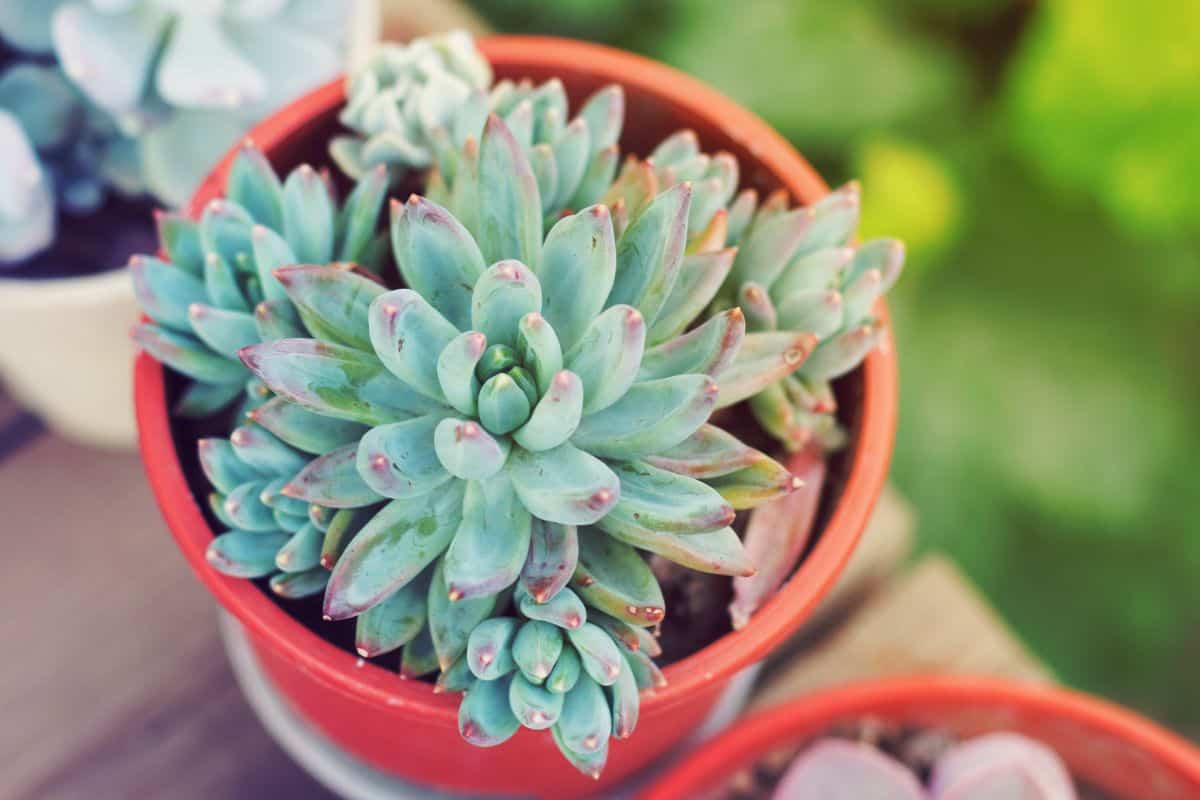
The Pachyveria glauca can withstand most conditions fairly well, so it is a good plant for those who are new to growing succulents. It is easy to care for and does not require much in terms of attention.
Jump to:
Pachyveria Glauca Appearance
| Name: | Pachyveria glauca |
| Soil: | Cactus potting soil and mineral grit |
| Blooming: | Spring |
| Light: | Full sun partial shade |
| Water: | When the soil is completely dry |
| Propagation: | Leaves and cuttings |
The Pachyveria glauca is a succulent with interesting colored leaves. They can be a range of colors, with anything from pale gray to different shades of green, to pinkish red. Sometimes the tips of the leaves will be tinged with blue or red.
The leaves are long, cylindrical-shaped, and thick at the bottom, tapering to a point at the top.
They form an interesting-looking star-shaped rosette. As the plant grows, the leaves will grow upwards, rather than spreading out sideways.
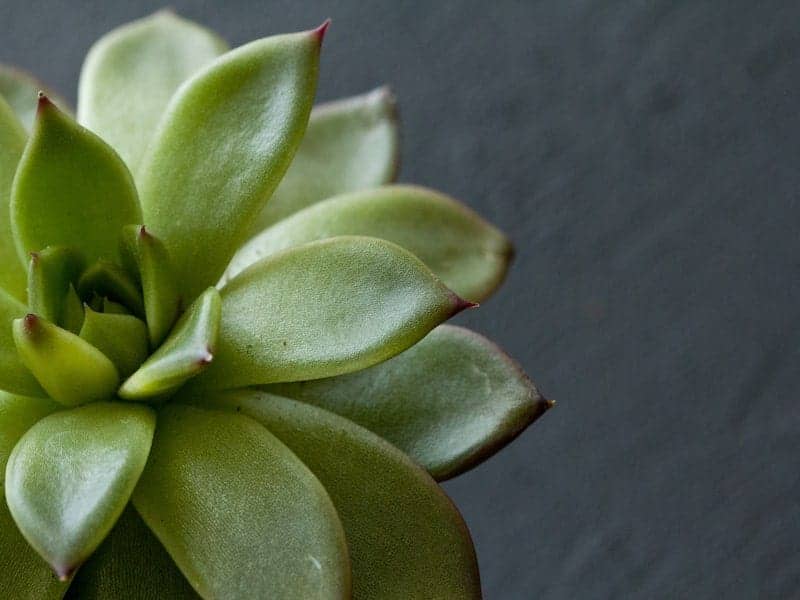
Buy it from:
The leaves may appear to have a fine white coating. This is called farina. It is a waxy coating that almost seals the leaves, in order to retain moisture. It is important not to try to remove it because it protects the plant from dehydration.
The Pachyveria glauca will develop a small flower as it matures. These flowers are pale pink, with peachy tones on the inside. They make a very attractive show.
Caring for the Pachyveria Glauca
The Pachyveria glauca is relatively easy to care for. It is a good plant for people who do not know much about cultivating succulents, as there is not too much that can go wrong with it, provided you follow some basic guidelines.
Light
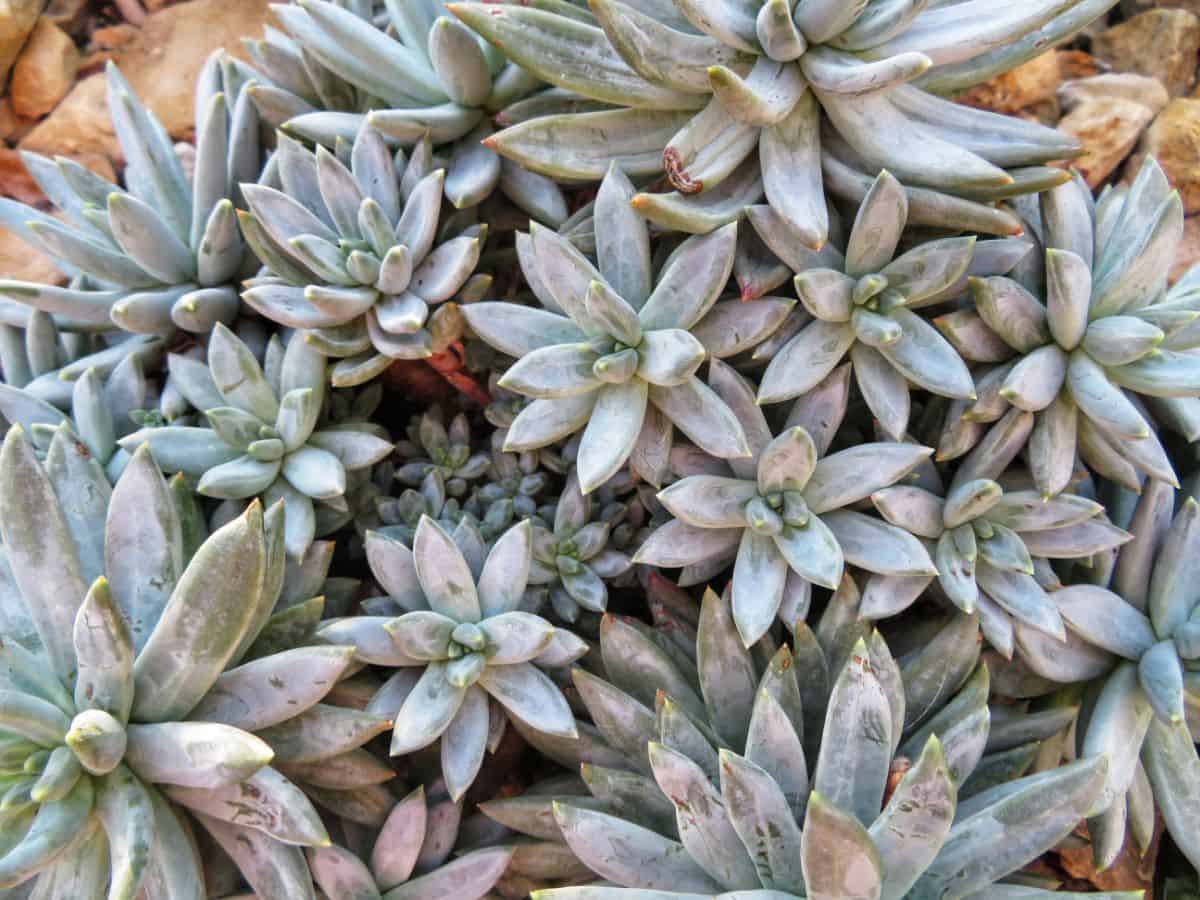
Like most succulents, the Pachyveria glauca likes lots of natural sunlight. It should be placed in a spot where it will receive a minimum of 6 hours of direct sunlight per day.
No products found.
If you do not live in an area that experiences extreme cold, you can plant this succulent in your beds outdoors. Choose an area that gets full sun to partial shade. The Pachyveria glauca can tolerate extreme heat better than many other succulents.
However, you should also take care not to over-expose your Pachyveria glauca to prolonged intense sunlight. Very long, unbroken periods of sun exposure on extremely hot days can cause sunburn, which will damage your plant.
If you would like to cultivate the Pachyveria glauca as an indoor plant, choose a warm south-facing room that gets lots of natural sunlight. Your plant will do very well on a sunny window sill.
If you do not have a room that gets enough natural light, it is advisable to buy a grow light to supplement the natural light. This mimics natural light and will help your plant to flourish indoors.
Water
The Pachyveria glauca is similar to most other succulents in that it does not need a lot of water. Because its dormant period is through the summer months, you should only water very infrequently in summer.
During the winter months, your Pachyveria glauca will go through its growth period. This is when it needs more watering. It should be watered every 5-6 days. The leaves can give you a good indication of whether the plant needs watering.
If the leaves are starting to look dried out and a little shriveled, it is time to water. The best way to water is to soak the soil very thoroughly, and then allow it to dry out completely before watering again. It is essential to have a pot with adequate drainage holes at the bottom, so that excess water can runoff.
Before watering again, make sure that the soil is completely dry. You can do this by inserting a finger to feel, or by inserting a thin wooden skewer or a kebab stick. It should be completely dry when you remove it.
Temperature
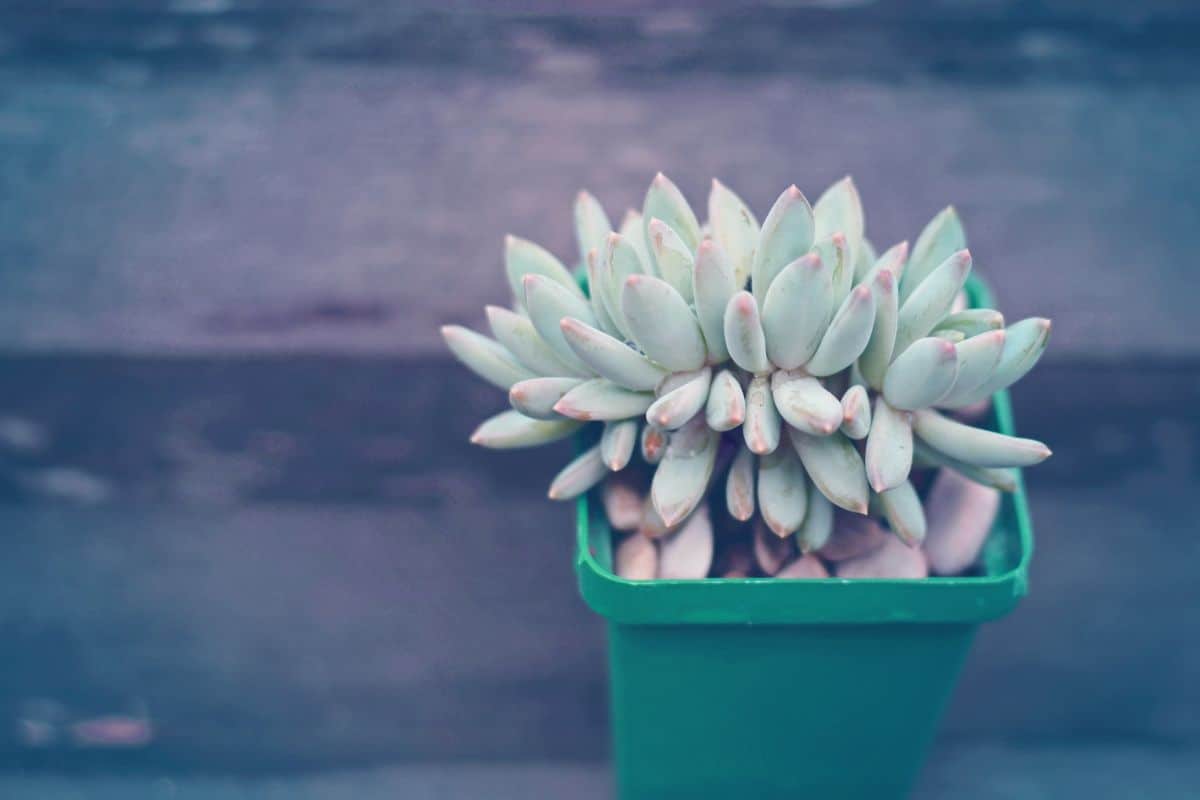
While the Pachyveria glauca can tolerate very hot conditions better than many other succulents, it is still necessary to ensure that it does not get too much direct sunlight when the weather is very hot. Sunburn is a very real possibility and will damage your plant.
The Pachyveria glauca cannot survive extremely cold conditions. It will be happiest in mild to moderate areas, where there are no extremes in temperature.
If you live in a colder climate, where the temperature is likely to drop below 20° Fahrenheit, it is preferable to plant your Pachyveria glauca in containers that can be brought indoors. If this succulent is exposed to temperatures below 20°, it will die.
The Pachyveria glauca is not terribly hardy, and will not cope well with frost. If it is left outdoors overnight during frosty periods, the frost will kill your plant. If frost is expected, you should either bring your plant in at night or cover it with a light covering to shield it from the frost.
Soil
The Pachyveria glauca is not terribly fussy when it comes to its soil. The most important factor is drainage. The pots need to have good drainage holes at the bottom.
It is essential that the Pachyveria glauca is planted in soil that has a combination of cactus potting soil and mineral grit. You should mix the cactus potting soil with coarse sand or perlite, or a mixture of the two. This will help to ensure good drainage.
Read Related Article: Fred Ives (Graptoveria) Succulent Care Guide
Propagating thePachyveria Glauca
The Pachyveria glauca is easy to propagate, either from leaves or cuttings.
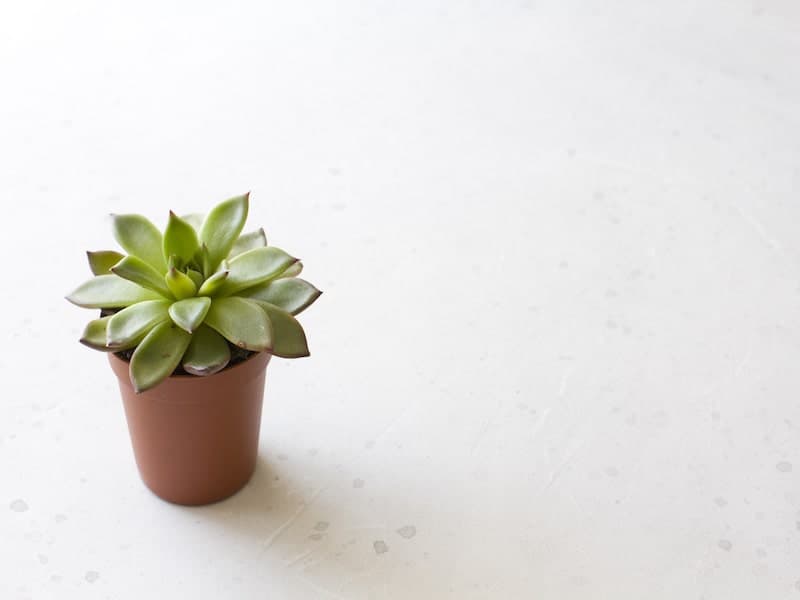
Propagating from leaves
Carefully remove a few leaves from the plant. Place them on top of a thin layer of soil, in a small dish. Sprinkle lightly with water every few days, until the leaves start sprouting little shoots.
You can now plant the leaves in a pot of prepared soil, and it should take root. Soon a new plant will start to grow.
Propagating from cuttings
Cut off a small piece of the plant, using a clean pair of sharp gardening scissors. Allow the cutting to dry for a few days until it forms a callous.
Plant the calloused cutting in a pot of soil, and water lightly every few days. Your new Pachyveria glauca succulent should start growing and will thrive if cared for.
Common Pests and Problems
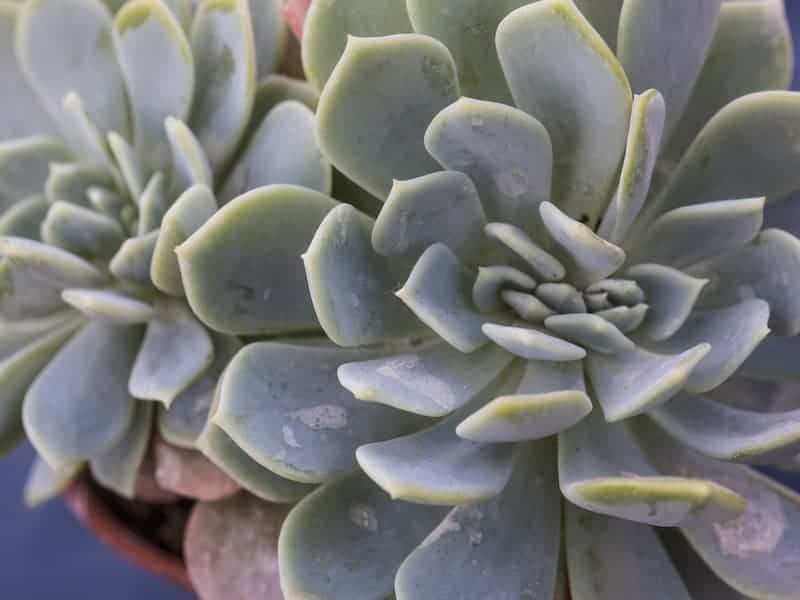
Overwatering
Overwatering is the biggest avoidable problem with succulents. If the plant gets too much water, the roots will constantly be wet. This will encourage root rot to set in, and it will kill your plant. Take care to follow the above guidelines for watering.
Check Also: Golden Sedum (Sedum Adolphi) Succulent Care Guide
Pests
The most common pest problem with Pachyveria glauca is mealybug. It is important to check your plant regularly for infestation. These tiny little insects will leave a fine white, furry coating on the leaves. You might initially think that it is a fungus growth.
Aphids, too, love Pachyveria glauca. These insects are so tiny that it is often impossible to detect them. They look like minute black or dark red spots on the leaves. They leave a web of ultra-fine, white filaments around the base of the leaves, and have the ability to kill a plant fairly quickly once they take hold.
Both of these pests will multiply very quickly if left unchecked and will proceed to devour your succulents. It is important to use a good quality pesticide, available from a nursery or garden center, to eradicate them completely. If you do not eliminate them, they will spread to your other plants.
Sources:
https://worldofsucculents.com/pachyveria-glauca-little-jewel/
https://mountaincrestgardens.com/pachyveria-glauca-limited-large/


